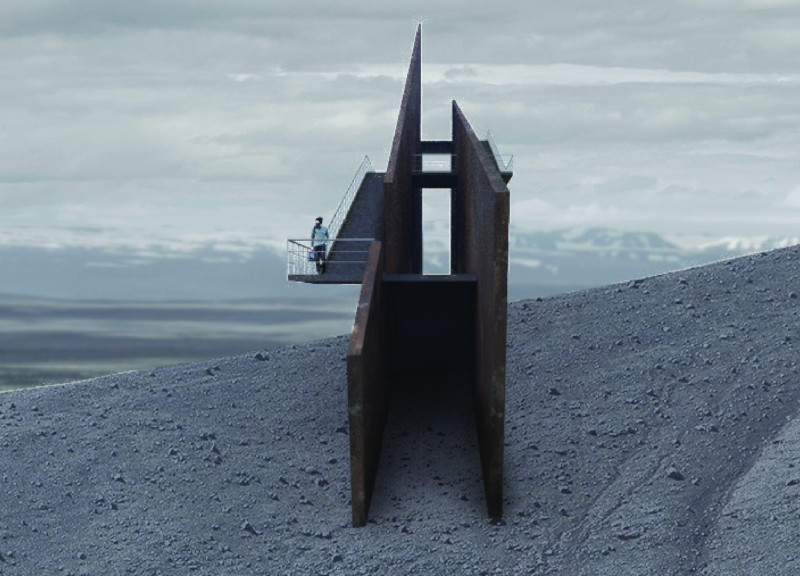5 key facts about this project
The design is situated in Iceland, taking advantage of the unique landscape formed by the Dimmuborgir Lava Fields, Lake Mývatn, and Hverfjall Crater. The project emphasizes the relationship between the built environment and the natural world. It explores how architecture can respond to and interact with the land while promoting themes of change and reclamation.
Conceptual Framework
At the heart of the design is the idea of engaging with the land. The phrase “cut into the earth, changing the landscape” reflects the intention to create a structure that modifies its surroundings. This thoughtful intervention aims to reshape the environment while respecting the natural features. This approach illustrates how architecture can fit within its context and engage with the physical characteristics of the site.
Natural Reclamation
Another important concept is that “natural processes reclaim the monument in its decay.” This perspective offers a way to think of architecture not as a permanent fixture but as a work that will evolve over time. The design encourages a connection between the structure and its environment, recognizing the inevitable effects of weather and time. This relationship gives the architecture a sense of life, as it connects with the cycles of the natural world.
Materiality and Aesthetic
While specific materials are not detailed, terms like “Raw” and “Rust” suggest an aesthetic grounded in authenticity. There seems to be a preference for finishes that reflect the ruggedness of the Icelandic landscape. Using materials that show wear and change connects the building to its surroundings. This approach enhances the overall sense of place, allowing the architecture to resonate with the local environment.
Contextual Response
The design purposefully emphasizes views of significant geographic features, weaving the architecture into the fabric of the landscape. Each element is carefully considered to ensure it enhances the region's beauty rather than competing with it. By aligning and positioning the structure in relation to the natural features, the design reinforces the overall dialogue between human creation and nature.
The project visibly interacts with light and shadow, creating dynamic patterns across its surfaces. This responsiveness to the environment showcases how the building will evolve over time, blending into the landscape while maintaining a distinct presence.



















































